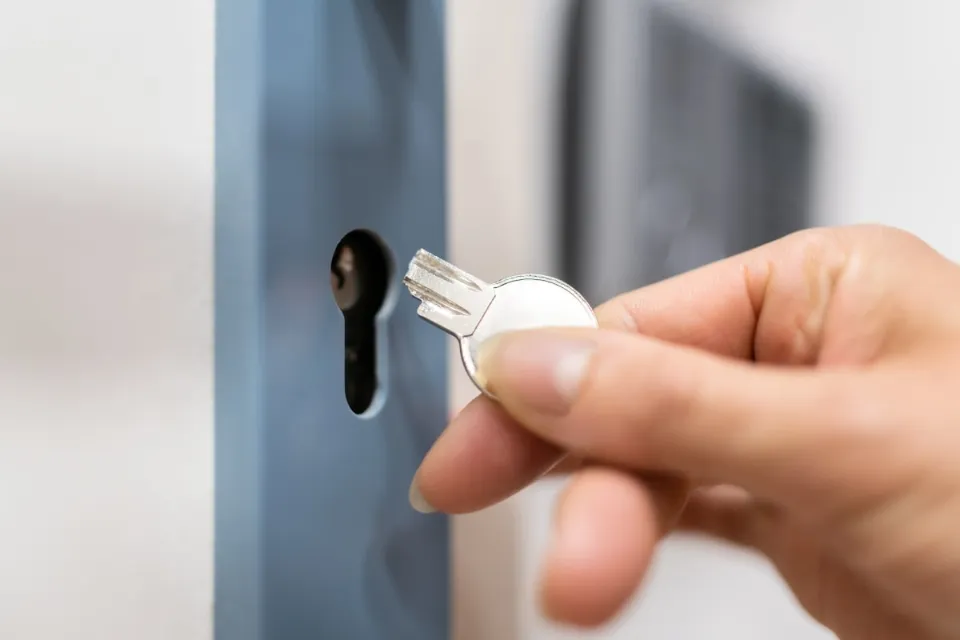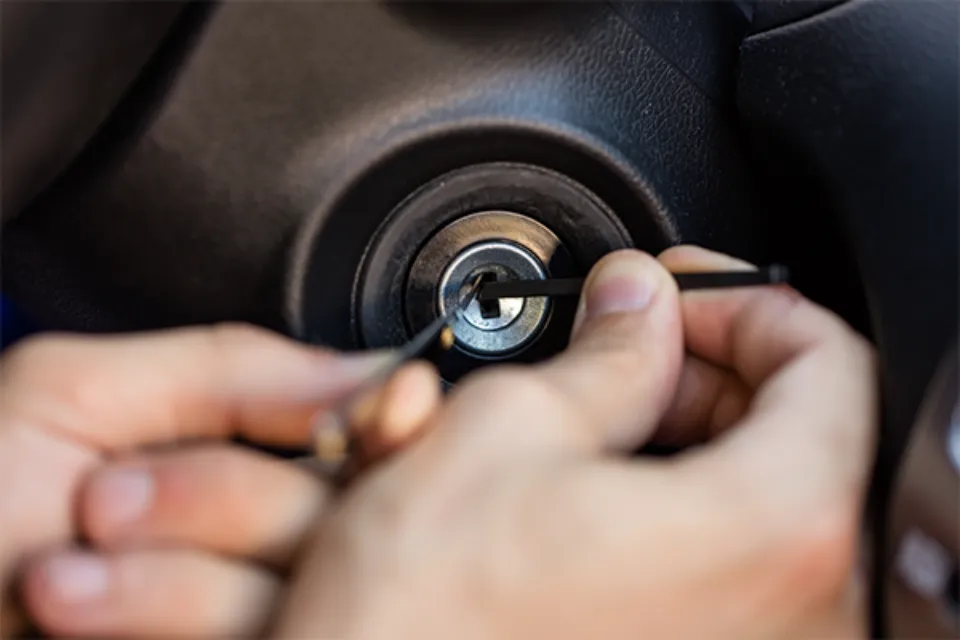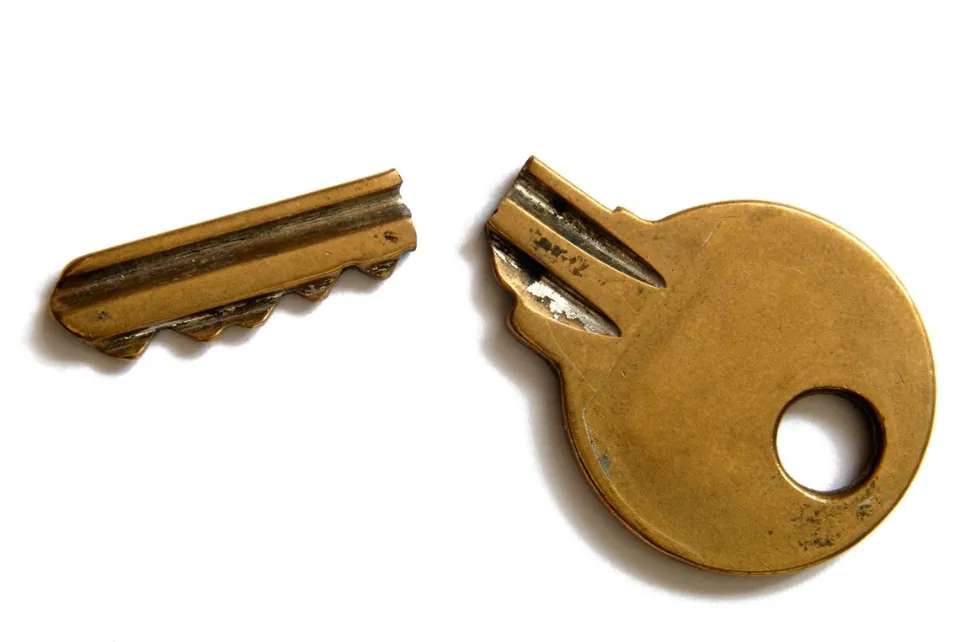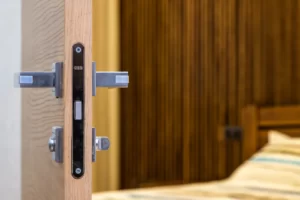
How to Remove a Broken Key Effortlessly
Feelings of dread and helplessness descended upon the scene when your key broke off in your lock with that stomach-churning snap. For a moment, some optimism “This door, at least, is still openable by me.” STOP! Before you do anything, make sure you have read this entire post. Learn how to get a broken key out of your door by reading this article.

Quick Preparation
Although optional, this preparation will facilitate the process. Start by lubricating the keyway. The ideal lubricant would be one that uses graphite or another dry lubricant. While oil-based lubricants like regular WD-40 will function, they risk clogging the lock’s internal mechanisms. The smoothness of the plug rotation might start to have issues after a short while. A graphite spray has just one drawback: it is incredibly easy to stain things.
Before you spray, check to make sure the lubricant’s nozzle is positioned so that it is inside the keyway. A rag or paper towel will also be necessary to wipe up any extra lube that leaks out of the keyway. A pair of needle-nose pliers should also be at hand because, although the broken key can be extracted using the other methods, doing so more quickly will be possible with pliers. You can simply use your pliers to pull the key free once enough of it is visible.
Remove a Borken Key by Diffrent Methods
Tweezers
The majority of people immediately reach for the tweezers when a key fragments in a lock. The width of your tweezers and the depth of the broken key in the lock should be your primary concerns. The majority of tweezers are too small for this job and will only end up pushing the key deeper into the keyway. Make sure your tweezers can open widely enough to fit around the key but not too thickly that they can’t fit along the sides of the key.
Your typical tweezers won’t fit because most keyways are warded. Tweezers work best when there is some of the key protruding from the keyhole when trying to remove a broken key from a lock. The likelihood that you will push the key deeper rises dramatically when it is placed too far back. We all love the game “Operation”, but sometimes life is more than just a game. If you have complete confidence in both your skills and your tweezers, only try this method.
Quick Tip
Avoid using the tweezers too firmly. The key fragment will be pushed deeper into the keyway once the tweezers close after grasping it. The key will become more challenging to remove with every unsuccessful attempt to grip it.
Broken Key Extractor
The expert response to this issue is a broken key extractor device. This tool will be used by the locksmith you call if they don’t make their own (which is likely the case). Put this tool inside the keyway along the key’s bitting to use it. To be more specific, you will try to hook the extractor’s hook(s) onto the key’s teeth. Place the object along the biting, then turn and pull to grab and extract the key. Of course, it might require several tries.
If you want to buy a broken key extractor, I would caution you that, like buying lock picks, these tools come in sets with extra variations. I observe that some people (including myself) use a key extractor with a single hooked hook and others with a double hooked hook. The other profiles are not necessary in addition to that. Save some cash and purchase one or two of these if you can.
Quick Tip
In an emergency, it is unlikely to have the professional tools to deal with a key that has broken off in a lock, but this is the tool you are ideally looking to replicate with your DIY method. Use the extractor’s information to guide your efforts to use another method to remove the broken key.
Hacksaw Blade
You can create your own broken key extractor using a miniature hacksaw blade if you don’t want to purchase a specialized model. (Small jigsaw blades can be used for this as well.) The smaller the piece of metal, the better because what you need is something thin that will fit in your keyway along with your broken key. Use some needle nose pliers to break the blade if necessary so that you can fit the serrated edge into the lock.
If your blade has serrations at an angle, insert it into the keyway with the serrations pointing back in your direction. As a result, it will be simpler to hook the key and insert the blade. By aligning the serrations on the blade with the bitting on the key, you can use this in a manner similar to the broken key extractor. Your broken key ought to be removed with a turn and a pull. Simply try again if the key does not come out the first time. This approach works best if you already have some blades on hand or the means to visit a hardware store.
Quick Tip
Never yank the blade into the keyway. Make blade adjustments if it does not fit smoothly. It needs to be thin enough to pass over the broken key piece and fit in the keyhole.
Super Glue
It seems a little strange to use super glue to unjam a lock. It is one of the strategies that I frequently see fail. However, it is a possibility if you are in a pinch and have these materials. In order to pull the key free, it is intended to be glued to something like a match. First off, do not attempt this if your key is deeply inserted into the keyway and no metal is visible. The broken key needs to be reachable for the superglue trick to work.
Put some super glue on the end of a match or a small wire. Remove any extra glue before placing this close to the keyway, or add more glue if necessary. A lock could be damaged by too much glue. The glue won’t stick if there isn’t enough. The broken key’s edge should be pressed against by the match or wire. Make sure not to push the broken key deeper into the lock when applying pressure. Pull your match away from the lock as if it were the bow of a key after allowing the substances to bind for the advised amount of time.
Quick Tip
Never try to turn the key in the lock to unlock the door once the glue has adhered to the key fragment. Since the key cannot be turned, the binding point cannot withstand the torque.

Tapping the Cylinder
You must be able to direct the keyway downward and toward the ground in order to tap the cylinder. This technique might work for you if you have a padlock or can remove a cylinder. Use a hammer to strike the lock while it is positioned so that the keyhole is facing down. This would be ideal if you could slam the cylinder into a solid surface. If this is going to work, it should work either way, though I would advise striking the keyway side of the lock rather than the back.
The key to this technique is to keep the lock still so that gravity can pull the broken key free. When this method is available, there aren’t many specialized tools needed, but it won’t happen very often. Consider having the lock core repaired by a locksmith if you accidentally overstruck the lock while using this method. Further difficulties could arise in the future if the lock core is damaged.
Quick Tip
If the key to your bike lock has broken off in the lock, try tapping the cylinder. Bike locks are frequently the simplest to turn so that their face is toward the ground. The only thing you’ll need is something to strike the lock, which you can probably find in your immediate surroundings (i.e. a rock, a chunk of wood, length of plastic, or other solid material).
Final Thoughts
Now that the broken key has been extracted from the lock, it’s possible that the procedure damaged the lock. So that the integrity is maintained and your lock is as secure as before, it is best practice to change your locks.
FAQs
Can a Magnet Remove a Broken Key?
Although removing a key with a magnet may not be the first thing that comes to mind, a strong magnet can successfully remove a broken key.
How Much Does It Cost to Fix a Broken Key?
Depending on the extent of the repair, the cost to remove a broken regular key from an ignition ranges from $100 to $150. There will be some special cases that are slightly more and some that are slightly less. Transponder keys are the following.
How Much Does It Cost to Remove a Broken Key from a Lock?
To avoid breaking the lock and having to replace it as well, you will need a locksmith to extract the key. Costs for key extraction range from $50 to $200. You can simply make a duplicate of your spare key if you already have one, saving you the trouble of rekeying the lock.
Why Do Keys Break in Locks?
There are several reasons why a key might break in a lock. First, the key may have lost some strength over time, making it more likely to break when turned, especially if done with too much force. Alternately, it could be that the lock is broken or that debris has gotten stuck in its mechanism.


